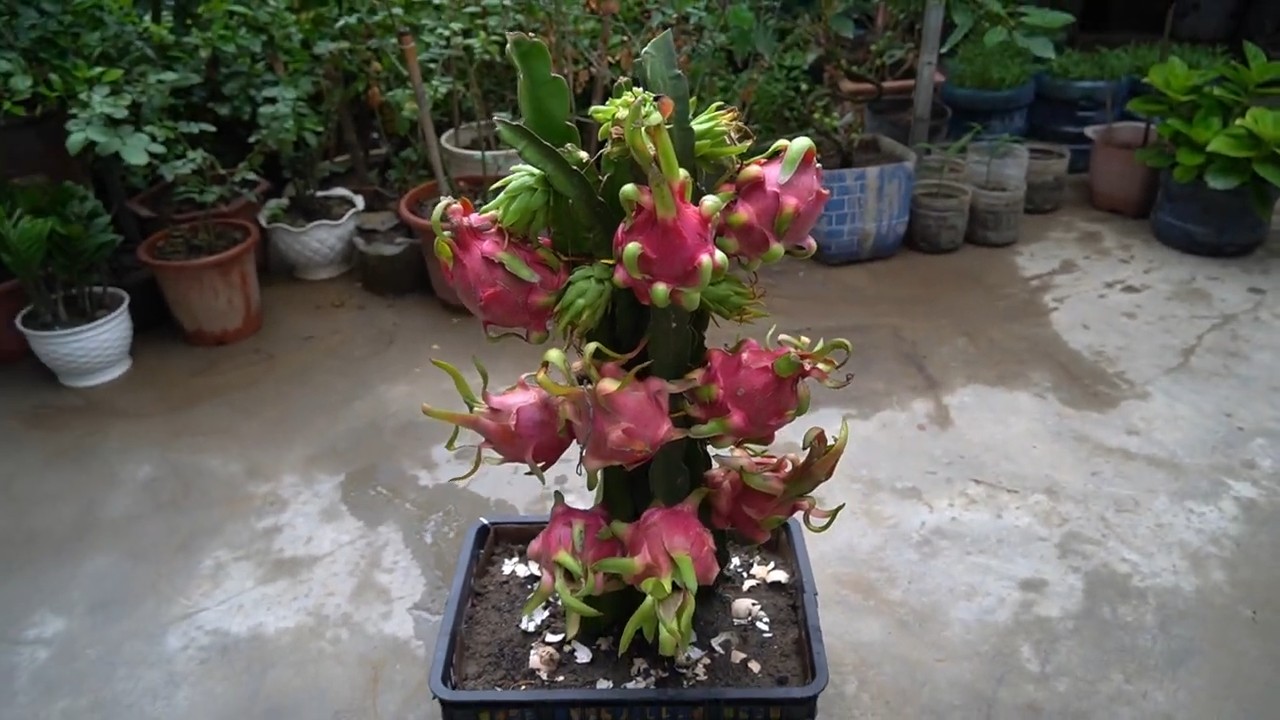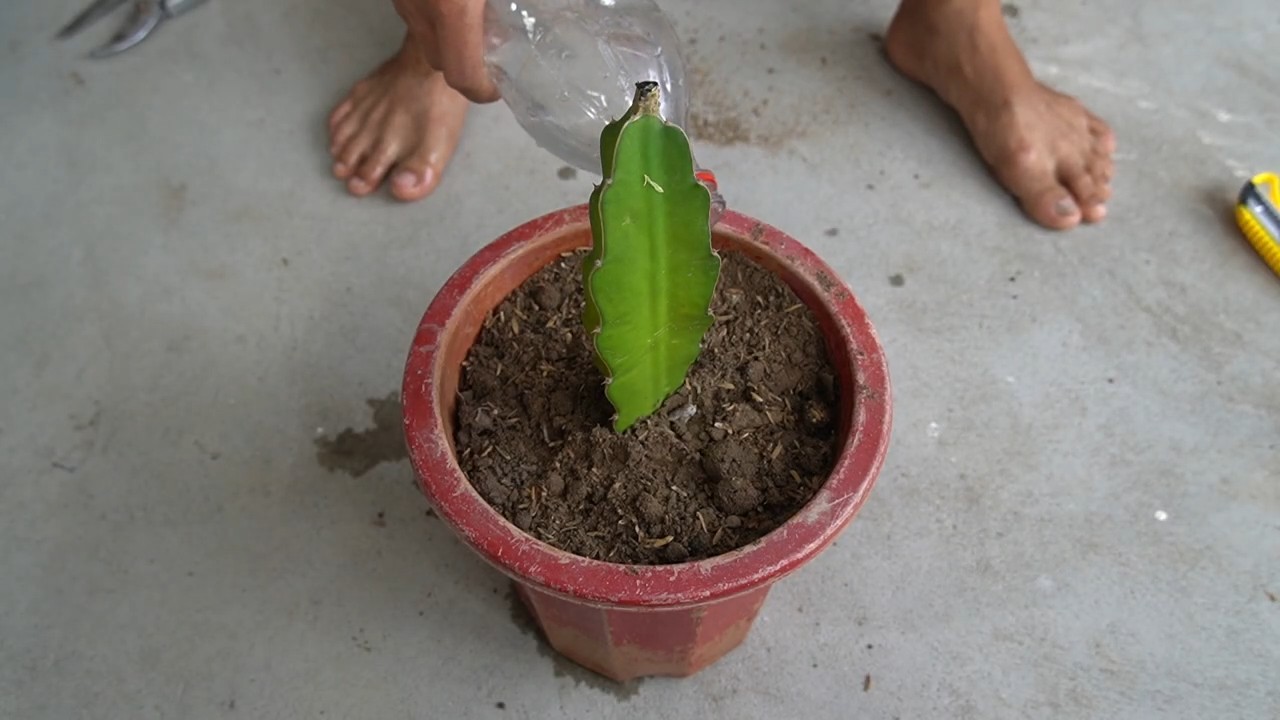Dragon fruit propagation cuttings – the secret to multiplying your vibrant, exotic garden without breaking the bank! Have you ever gazed upon a dragon fruit, with its otherworldly beauty and delicious flavor, and wished you could have more? I know I have! Forget expensive nursery plants; this guide unlocks the simple, rewarding process of growing your own dragon fruit jungle from cuttings.
Dragon fruit, also known as pitaya, has a rich history rooted in Central and South America, eventually making its way to Southeast Asia where it’s now widely cultivated. For centuries, these stunning fruits have been prized not only for their taste but also for their ornamental appeal. Imagine bringing that touch of the exotic to your own backyard!
Why should you learn this DIY trick? Well, for starters, dragon fruit plants can be quite pricey. But more importantly, propagating from cuttings is incredibly satisfying. It’s a hands-on way to connect with nature, learn about plant life cycles, and expand your garden in a sustainable and cost-effective manner. Plus, who wouldn’t want to impress their friends and family with their dragon fruit growing prowess? This method of dragon fruit propagation cuttings is easier than you think, and I’m here to guide you every step of the way. Let’s get started!

Propagating Dragon Fruit from Cuttings: Your DIY Guide for an Exotic Harvest
Hey plant friends! Have you ever tried a dragon fruit? This exotic fruit is not only super delicious but also relatively easy to grow yourself. And the best part? We’re going to do it from cuttings today! I’ll show you how you can start your own dragon fruit plantation with a few simple steps and a little patience. Let’s go!
What you need: The Material List
Before we get started, let’s make sure we have everything ready. Here is a list of the things you’ll need for propagating dragon fruit:
- A healthy dragon fruit cutting: Preferably from an established plant that is already bearing fruit. It should be at least 20-30 cm long and show no signs of diseases or pests.
- A sharp, clean knife or pruning shears: Hygiene is important to prevent infections. Disinfect your tool with alcohol beforehand.
- Rooting hormone (optional): This helps the cuttings to form roots faster. You can find it in any garden center.
- A well-draining substrate: A mixture of cactus soil, perlite, and a little compost is ideal. Dragon fruits do not like waterlogging.
- Pots: Choose pots with drainage holes that are large enough to accommodate the cutting.
- A spray bottle: For moistening the cuttings.
- A warm, bright location: Dragon fruits love the sun!
- Patience: Rooting can take several weeks.
Step-by-Step Guide: How to Propagate Your Dragon Fruit
Now that we have everything, we can start the actual work. Follow these steps to successfully root your dragon fruit cuttings:
1. Preparing the cutting:
- Choose a healthy shoot from your mother plant. It should be strong and free of damage.
- Cut the shoot with your disinfected knife or pruning shears. Make sure to make a clean cut.
- Let the cutting dry in a dry, shady place for 5-7 days. This will allow a callus (a type of scar tissue) to form at the cut, which protects against rot. This step is very important!
2. Applying rooting hormone (optional):
- If you are using rooting hormone, lightly dip the lower end of the cutting (the cut surface) into the powder. Shake off any excess powder.
3. Planting the cutting:
- Fill the pot with your prepared substrate.
- Make a hole in the center of the substrate that is deep enough to hold the cutting.
- Carefully place the cutting in the hole and fill it with substrate. Press the soil down lightly to stabilize the cutting. Make sure the cutting is not planted too deep, as this can lead to rot.
4. Watering and Location:
- Water the cutting lightly after planting. The substrate should be moist, but not wet.
- Place the pot in a warm, bright place, but avoid direct sunlight, especially in the first few weeks. An east or west window is ideal.
5. Care during rooting:
- Spray the cutting regularly with water to increase humidity.
- Check the substrate regularly and water when it feels dry. Avoid waterlogging!
- After a few weeks (usually 4-8 weeks), roots should form. You can check this carefully by gently pulling on the cutting. If it resists, it has taken root.
The Growth Phase: From Cutting to Plant
Once your cutting has taken root, the actual growth phase begins. Here are a few tips on how to best care for your young dragon fruit plant:
- Repotting: When the roots fill the pot, it’s time to repot the plant into a larger one. Choose a pot that is at least twice as large as the previous one.
- Watering: Water your dragon fruit plant regularly, especially during the growing season (spring and summer). Let the substrate dry out slightly between waterings.
- Fertilizing: Fertilize your dragon fruit plant every 2-4 weeks during the growing season with a cactus fertilizer.
- Sunlight: Dragon fruits love the sun! Place your plant in a sunny location, ideally with at least 6 hours of direct sunlight per day.
- Support: Dragon fruits are climbing plants and need a trellis. You can use a stake, a trellis, or another suitable structure.
- Overwintering: In winter, when the temperatures drop, you should move your dragon fruit plant to a cooler, bright place and reduce watering. It needs a dormant period to grow strong again and bear fruit the following year.
Common Problems and Solutions
Problems can also occur when propagating and caring for dragon fruit. Here are a few common problems and how you can solve them:
- Rot: Rot is often a sign of waterlogging. Make sure the substrate is well-draining and avoid overwatering. If you discover rot, cut off the affected areas and repot the plant in fresh substrate.
- Pests: Dragon fruits can be infested by pests such as mealybugs or spider mites. Check your plant regularly and treat it with a suitable insecticide if necessary.
- Yellow leaves: Yellow leaves can be a sign of a nutrient deficiency. Fertilize your plant regularly with a cactus fertilizer.
- No fruits: Dragon fruits usually take 1-2 years to bear fruit. Make sure your plant gets enough sun and is properly fertilized. Some varieties are self-sterile and require a second plant for pollination.
Additional Tips for Success
Here are a few more tips that can help you succeed in propagating dragon fruit:
- Choose the right variety: There are many different dragon fruit varieties that differ in taste, color, and size. Find out which variety is best suited for your climate and your needs.
- Be patient: Rooting cuttings and growing dragon fruits requires patience. Don’t give up if it doesn’t work right away!
- Observe your plant: Pay attention to changes in the appearance of your plant and adjust your care accordingly.
- Share your experiences: Exchange ideas with other dragon fruit growers and share your experiences.
With these tips and tricks, you should be able to successfully propagate dragon fruit from cuttings and enjoy your own exotic harvest. Good luck

Conclusion
So, there you have it! Mastering dragon fruit propagation from cuttings is not just a fun gardening project; it’s a gateway to a bountiful harvest of this exotic and delicious fruit. We’ve walked you through the entire process, from selecting the perfect cuttings to nurturing them into thriving plants. Why is this DIY trick a must-try? Because it empowers you to expand your dragon fruit collection exponentially, all while saving money and gaining a deeper connection to the growing process. Imagine the satisfaction of harvesting your own dragon fruit, knowing you nurtured it from a simple cutting!
This method offers a significant advantage over starting from seed, which can be a lengthy and unpredictable process. With cuttings, you’re essentially cloning a mature plant, ensuring you get fruit sooner and with the same desirable characteristics. Plus, it’s incredibly rewarding to witness the transformation of a seemingly lifeless cutting into a vibrant, fruit-bearing vine.
But don’t stop there! Experiment with different varieties of dragon fruit. Try propagating cuttings from red-fleshed, white-fleshed, or even yellow-fleshed varieties to create a diverse and colorful dragon fruit garden. You can also explore different rooting mediums. While we recommended a well-draining potting mix, some gardeners have success with perlite, vermiculite, or even just water. Observe how your cuttings respond to different conditions and adjust your approach accordingly.
Consider the environment where you’ll be growing your dragon fruit. If you live in a colder climate, you can still enjoy this tropical fruit by growing it in containers that can be moved indoors during the winter months. Provide ample sunlight and support for your growing vines, and you’ll be rewarded with a stunning display of flowers and fruit.
We encourage you to embrace this DIY project and embark on your own dragon fruit propagation journey. Don’t be afraid to experiment, learn from your mistakes, and most importantly, have fun! The beauty of gardening lies in the constant learning and discovery.
And now, we want to hear from you! Have you tried propagating dragon fruit from cuttings before? What were your experiences? What tips and tricks have you learned along the way? Share your stories, photos, and questions in the comments below. Let’s create a community of dragon fruit enthusiasts and learn from each other. Together, we can unlock the secrets to successful dragon fruit propagation and enjoy the fruits (literally!) of our labor. So, grab your pruning shears, select your cuttings, and get ready to experience the magic of dragon fruit propagation! We are confident that with a little patience and care, you’ll be enjoying your own homegrown dragon fruit in no time. Remember, the key to success is consistent care and attention. Keep the soil moist, provide adequate sunlight, and protect your cuttings from extreme temperatures. With these simple steps, you’ll be well on your way to becoming a dragon fruit propagation expert.
Variations and Advanced Techniques
For the more adventurous gardener, consider experimenting with air layering as another propagation method. This involves encouraging roots to form on a stem while it’s still attached to the parent plant. It’s a slightly more advanced technique, but it can be a great way to propagate larger cuttings or branches.
Another variation is to use rooting hormones to speed up the rooting process. While not essential, rooting hormones can increase the success rate, especially for cuttings that are more difficult to root. Simply dip the cut end of the cutting in rooting hormone powder before planting it in the rooting medium.
Finally, remember that dragon fruit is a climbing plant, so it will need support as it grows. Provide a trellis, stake, or other structure for the vines to climb on. This will not only help the plant grow upright but also improve air circulation and sunlight exposure, leading to healthier growth and more abundant fruit production.
Frequently Asked Questions (FAQ)
What is the best time of year to propagate dragon fruit cuttings?
The ideal time to propagate dragon fruit cuttings is during the warmer months, typically in spring or early summer. This is when the plant is actively growing, and the cuttings will root more easily. However, with proper care and environmental control (like a greenhouse or indoor setup), you can propagate dragon fruit cuttings year-round. The key is to provide consistent warmth and humidity.
How long does it take for dragon fruit cuttings to root?
Rooting time can vary depending on several factors, including the variety of dragon fruit, the size of the cutting, and the environmental conditions. Generally, you can expect to see roots forming within 2-4 weeks. However, it may take longer for some cuttings to develop a strong root system. Be patient and avoid disturbing the cuttings too much during this time. Look for signs of new growth, such as small leaves or shoots, as an indication that the cutting has rooted successfully.
What kind of soil is best for rooting dragon fruit cuttings?
Dragon fruit cuttings need a well-draining soil mix to prevent rot. A good option is a mix of equal parts potting soil, perlite, and coarse sand. This combination provides good drainage, aeration, and moisture retention. Avoid using heavy clay soils, as they can become waterlogged and suffocate the roots. You can also use a commercial cactus or succulent mix, which is specifically formulated for plants that prefer well-draining soil.
How often should I water dragon fruit cuttings?
Water dragon fruit cuttings regularly, but avoid overwatering. The soil should be kept consistently moist, but not soggy. Water when the top inch of soil feels dry to the touch. During the rooting process, it’s important to maintain a humid environment around the cuttings. You can achieve this by misting the cuttings regularly or covering them with a plastic bag or dome. However, be sure to provide adequate ventilation to prevent the growth of mold or fungus.
How much sunlight do dragon fruit cuttings need?
Dragon fruit cuttings need bright, indirect sunlight to root properly. Avoid placing them in direct sunlight, as this can scorch the leaves and damage the cuttings. A location near a window with filtered sunlight is ideal. If you don’t have access to natural sunlight, you can use grow lights to provide supplemental lighting. Aim for at least 6-8 hours of light per day.
How do I know if my dragon fruit cutting has rooted successfully?
The best way to tell if your dragon fruit cutting has rooted successfully is to gently tug on it. If it resists being pulled out of the soil, it has likely developed roots. You can also look for signs of new growth, such as small leaves or shoots. Once the cutting has rooted, you can gradually acclimate it to more sunlight and less humidity.
Can I propagate dragon fruit cuttings in water?
Yes, you can propagate dragon fruit cuttings in water. Simply place the cut end of the cutting in a jar or glass of water, making sure that the leaves are not submerged. Change the water every few days to prevent the growth of bacteria. Once the roots are about an inch long, you can transplant the cutting into a pot with well-draining soil.
What are some common problems when propagating dragon fruit cuttings?
Some common problems when propagating dragon fruit cuttings include rot, fungal infections, and lack of rooting. Rot is usually caused by overwatering or poor drainage. Fungal infections can occur in humid environments. To prevent these problems, use a well-draining soil mix, avoid overwatering, and provide adequate ventilation. If you notice any signs of rot or fungal infection, remove the affected parts of the cutting immediately. Lack of rooting can be caused by insufficient sunlight, low humidity, or poor-quality cuttings. Make sure to provide the cuttings with optimal conditions and use healthy, mature cuttings.
How big should a dragon fruit cutting be?
A good size for a dragon fruit cutting is typically between 6 and 12 inches long. This provides enough stem for rooting and allows the cutting to establish itself quickly. Make sure the cutting is taken from a healthy, mature stem and has at least a few nodes (the points where leaves or branches emerge).
What do I do after my dragon fruit cutting has rooted?
Once your dragon fruit cutting has rooted and is showing new growth, it’s time to transplant it into a larger pot or directly into the ground, depending on your climate and growing conditions. Choose a location that receives plenty of sunlight and has well-draining soil. Water regularly and fertilize with a balanced fertilizer to promote healthy growth. Provide a trellis or other support structure for the vines to climb on. With proper care, your dragon fruit plant will eventually produce beautiful flowers and delicious fruit.





Leave a Comment